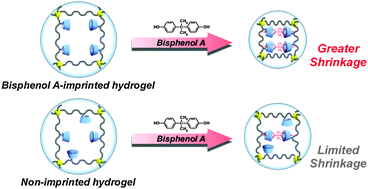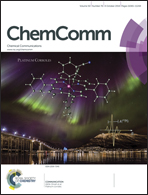Target molecule-responsive hydrogels designed via molecular imprinting using bisphenol A as a template†
Abstract
Target molecule-responsive hydrogels with β-cyclodextrin (β-CD) were prepared via molecular imprinting using bisphenol A (BPA) as a template. BPA-imprinted hydrogels showed greater shrinkage than non-imprinted hydrogels because CD ligands arranged at suitable positions formed CD–BPA–CD complexes that acted as crosslinks.


 Please wait while we load your content...
Please wait while we load your content...